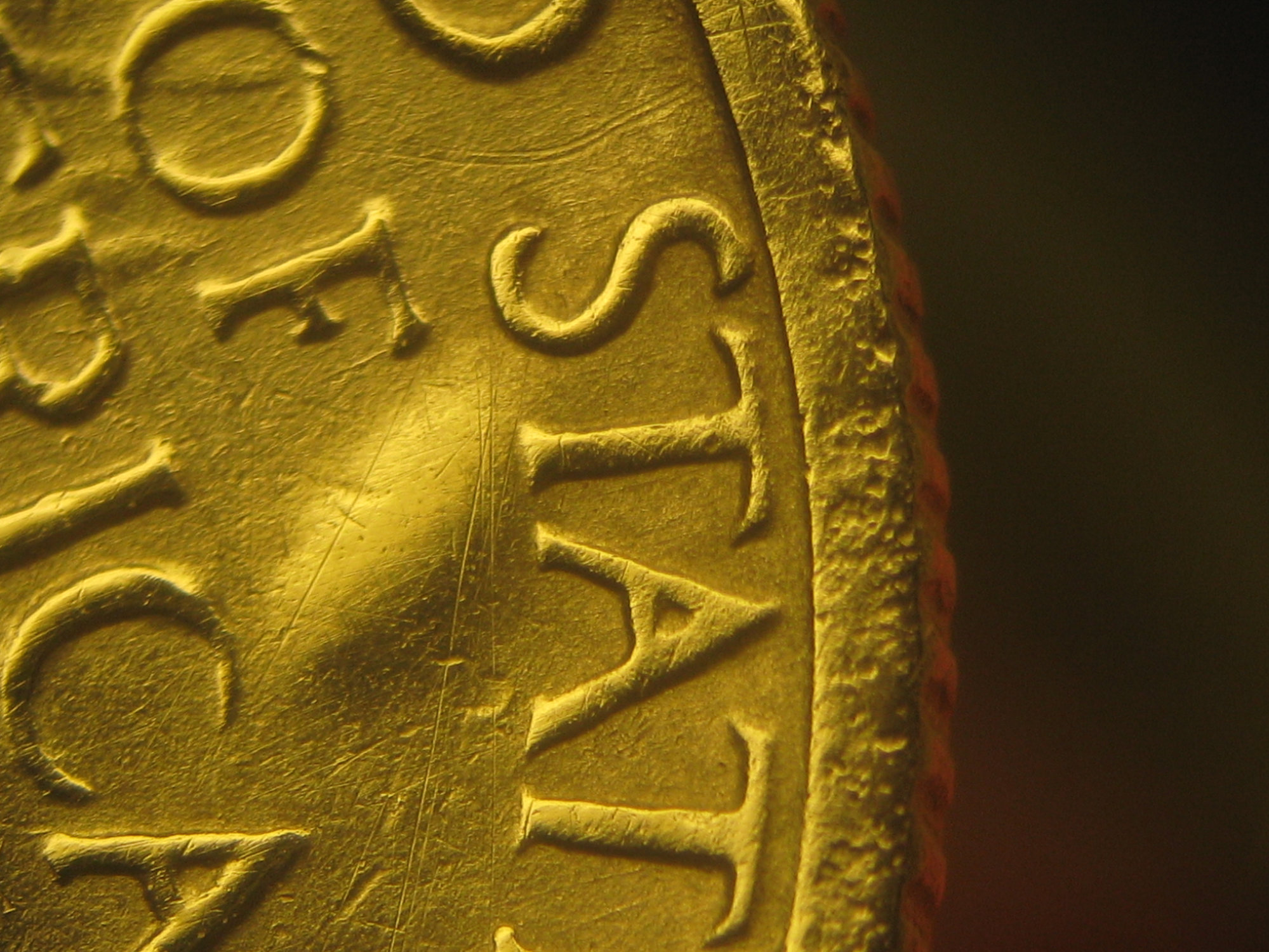Quiz: What caused this raised oval characteristic.
 Insider2
Posts: 14,452 ✭✭✭✭✭
Insider2
Posts: 14,452 ✭✭✭✭✭
You don't need to see the entire coin to get the correct answer. The poll is anonymous so take a guess anyway.
Hopefully, the advanced collectors will wait to answer so others can guess.

Quiz: What caused this raised oval characteristic.
This is a private poll: no-one will see what you voted for.
0
Comments
I went with occluded gas. I thought these were more likely on clad pieces, but I suppose if the annealing process on gold planchet went wrong, it would produce the same effect under the pressure of minting...
Successful BST transactions with: SilverEagles92; Ahrensdad; Smitty; GregHansen; Lablade; Mercury10c; copperflopper; whatsup; KISHU1; scrapman1077, crispy, canadanz, smallchange, robkool, Mission16, ranshdow, ibzman350, Fallguy, Collectorcoins, SurfinxHI, jwitten, Walkerguy21D, dsessom.
I am not advanced, so I 'guessed' cast bubble since the rim look to have cast characteristics and there are other surface 'defects' shown in the pic.
But, as usual I will await the experts opinions
Successful transactions with : MICHAELDIXON, Manorcourtman, Bochiman, bolivarshagnasty, AUandAG, onlyroosies, chumley, Weiss, jdimmick, BAJJERFAN, gene1978, TJM965, Smittys, GRANDAM, JTHawaii, mainejoe, softparade, derryb, Ricko
Bad transactions with : nobody to date
I have no idea.
Occluded Gas
Stuart
Collect 18th & 19th Century US Type Coins, Silver Dollars, $20 Gold Double Eagles and World Crowns & Talers with High Eye Appeal
"Luck is what happens when Preparation meets Opportunity"
Pretty lousy die work if that is not a cast. Look at the different 'A's for example. Look at what is going on around the 'O'. So I voted for die cast bubble.
I think a casting bubble would be incuse (air trapped on the surface of the mould leading to an indentation on the finished cast). No?
Some very good topics of discussion here...I'll post comments tomorrow.
I'm gonna jump off the band wagon and go with PMD.
Moles or ground hogs.
It looks like a planchet defect to me... that was not a choice.... Cheers, RickO
This is the correct answer.
Thanks to each of you who responded. I'll use your posts as a starting point t expand the discussion. This is not a critizem of any answer as you only had a tiny magnified part of a coin to examine in my bad (not white balanced) image.
The image shows a raised, smooth lump. I cannot think of any planchet defect that would be raised lump on a coin.
There is PMD. That's what we call the scratches.
What makes the "A's" different is the die clash under one of them. The rims are all beat up and that may have influenced your opinion.
There are two types of "bubble-like" defects found on older castings. On type leaves a hole in the surface while the other leaves a raised, smooth lump.
Now, why not think about how each could be produced when a cast fake is made in a mold.
Anyone wish to answer this?
@Insider2 "There is PMD. That's what we call the scratches."
I thought you were asking about the raised oval lump not the scratches.
Glad you set me straight about the scratches being PMD.
Could this be the answer to your question? When a cast fake is made in a mold and the host coin has a outward bubble the result will be a concave crater-like effect on the casting. The opposite effect will be apparent when the host coin exhibits a crater-like ding.
@Insider2 "The image shows a raised, smooth lump. I cannot think of any planchet defect that would be raised lump on a coin." If it were a clad coin, it could have had an impurity trapped between the layers....Cheers, RickO
Yes. If a bubble is on the surface of the model, the mold material cannot fill the space resulting in a round depression into the surface of the cast. If a bubble is in the mold material, the cast material will fill it and leave a raised lump.
ill go with occulated gas